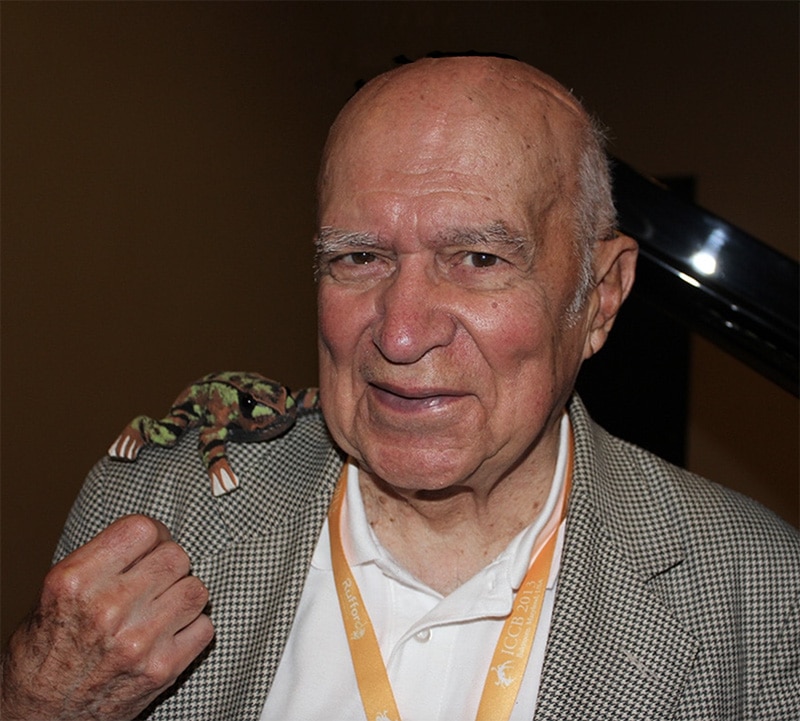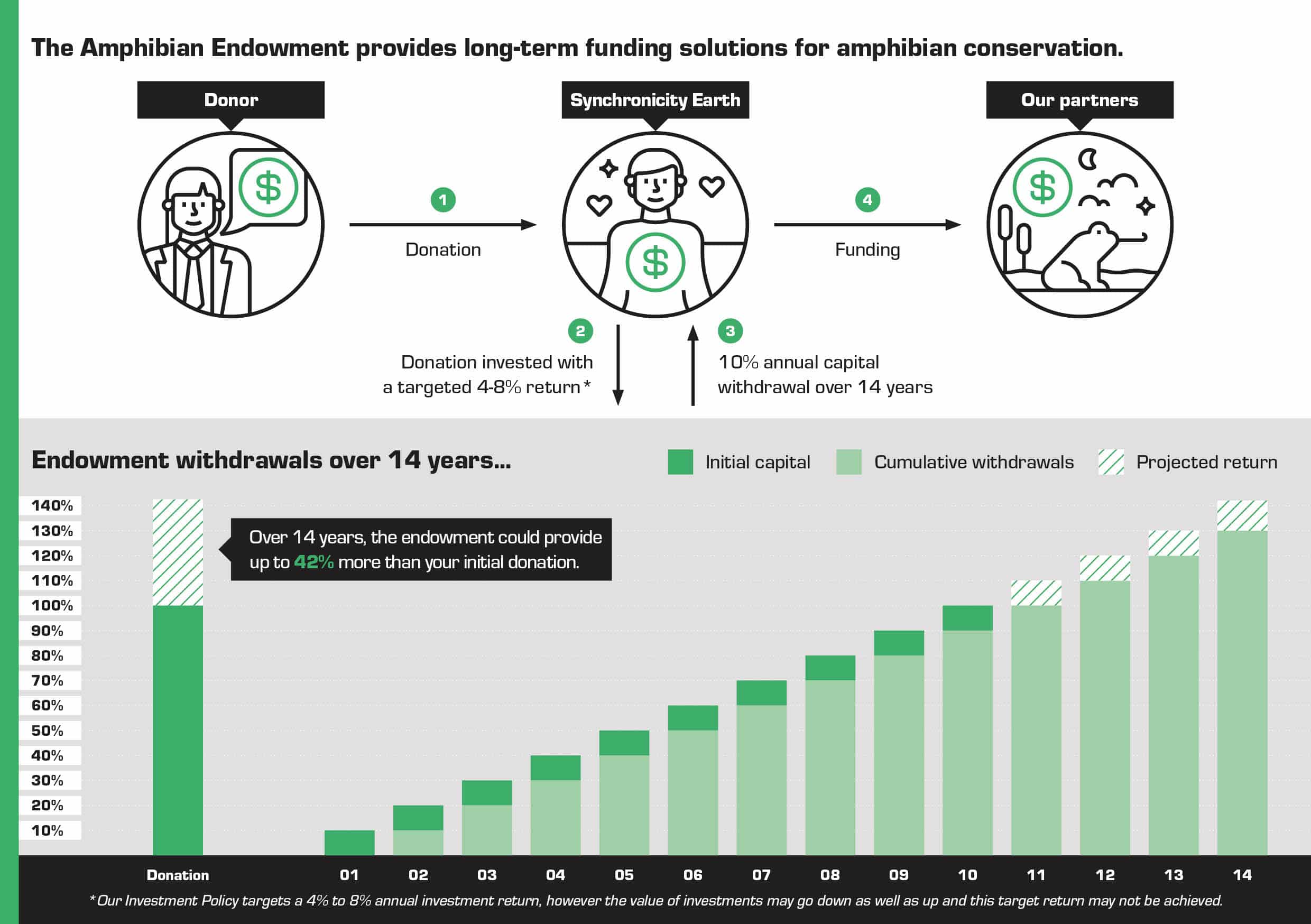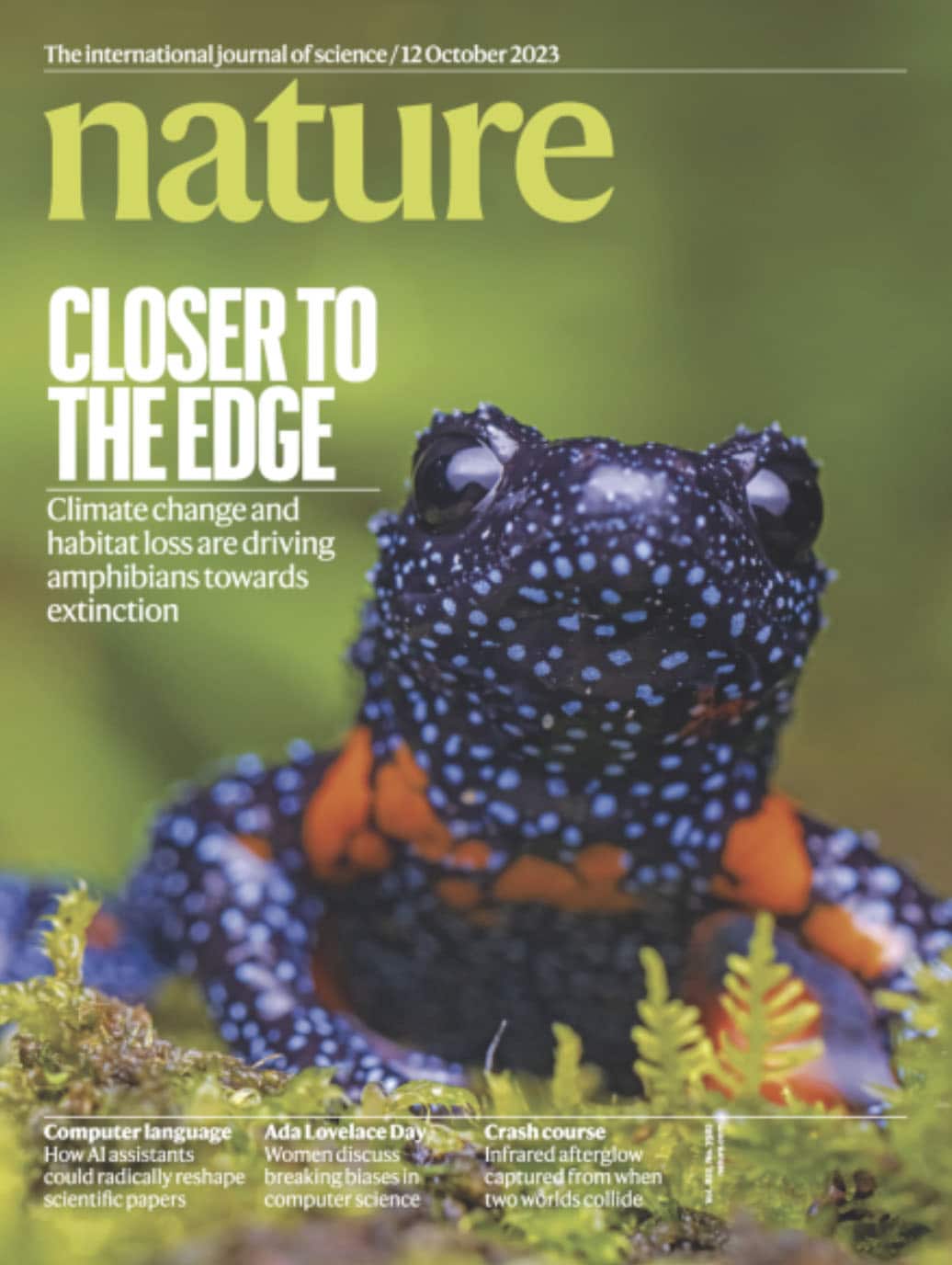Amphibian Endowment
In Honour of Dr George B. Rabb
Over 40% of the world’s amphibians are threatened.
Where action is taken and critical habitats are protected, amphibians are showing signs of recovery, but scaled-up investment is urgently needed to reverse catastrophic amphibian extinctions.
Donations to the Amphibian Endowment will provide flexible and core support to vital research, on-the-ground conservation, and capacity development for amphibian conservation around the world through an expendable endowment. The spenddown of each donation will be approximately fourteen years, as shown below.
How it supports amphibian conservation
Synchronicity Earth’s Amphibian Programme has been developed to tackle one of the greatest challenges in conservation today: the amphibian extinction crisis. Despite the dire need, amphibians are constantly overlooked, and as a result, efforts to gather information, reduce threats, and build a global response are in desperate need of support.
The Amphibian Endowment gives donors the opportunity to provide long-term support, either through a single donation or a series of donations, and plug the funding gaps identified by the Amphibian Programme which have not been met by more traditional fundraising approaches.
The Amphibian Endowment aims to:

Grow donations over time

Provide core funding

Unite donors
Building the global movement
In recent years, the endowment has been used particularly to strengthen the networks which help organisations around the world share knowledge, collaborate, and develop coordinated action plans: the Amphibian Ark (AArk), the Amphibian Survival Alliance (ASA), and the IUCN SSC Amphibian Red List Authority (ARLA).
These organisations provide the critical data, analysis, and support to enable the work of amphibian conservationists and organisations worldwide, but this groundwork is often challenging to fundraise for. As a result, the support of the Amphibian Endowment has been critical in enabling this essential work to continue.
One of the great successes from this work was the publication of the second Global Amphibian Assessment in 2023. The International Union for Conservation of Nature (IUCN) Red List is a database with conservation assessments for species which are used to analyse global conservation efforts, identify priorities, and drive action from the grassroots level all the way up to international policy.
In a monumental effort which took years of gathering evidence, collating expert opinion, and assessing threats, 8,011 species assessments were completed in total, and the findings were published on the cover of the prestigious scientific journal Nature.
Responding to opportunities and emergencies
An advantage of our endowment model is the ability to move quickly and provide flexibility around grants to our partners when circumstances change (for example, an opportunity to purchase land to create a reserve or emergency situations like natural disasters).
The importance of the network and support that AArk, ASA, and ARLA provide for local conservation organisations was called upon for an emergency situation in 2023 when Save Ghana Frogs, funded through the Amphibian Programme, reported that a significant portion of the highly biodiverse Sui Forest Reserve (one of the only known sites for the Critically Endangered giant squeaker frog) had been logged.
Despite being named a reserve, Sui Forest was unprotected, but after Save Ghana Frogs reached out for help, ARLA reviewed Ghana’s amphibian red list assessments, ASA used those assessments to prioritise Key Biodiversity Area and Alliance for Zero Extinction site declarations in Ghana (Sui Forest was confirmed as both, providing certain protections), and AArk worked with Save Ghana Frogs and other local partners to complete a Conservation Needs Assessment for all species in the forest; this will guide the projects that are to be developed in the coming years.
Dr George B. Rabb’s legacy
At the first World Congress of Herpetology in 1989 the alarm bell was first sounded for unexplained and dramatic amphibian declines and extinctions taking place around the world. This could have resulted in a shocked scientific world with no follow-up action. However, the late Dr George B. Rabb, after whom the endowment is named, had the vision and leadership to turn the alarm bell into a clarion call to mobilise action for amphibian research and conservation.
As a direct result, the amphibian conservation movement started to develop, focused on both understanding the science and the scale of the problem, and then working on conservation solutions.
In May 2017, the Chair of Synchronicity Earth, Adam Sweidan, wrote to George to tell him of his vision to establish an Amphibian Endowment, requesting George’s agreement that it be named in his honour. On 16th June, as George’s health was already deteriorating, he responded to Adam saying:

Dr George B. Rabb. Image: Phil Bishop
“I lend my name to this enterprise as you suggest. With deep appreciation of what you are undertaking to do for the conservation of a wonderful class of animals, I thank you again sincerely. George.”
George left a generous legacy to the Amphibian Endowment in his will which has provided a lasting impact on the work that he dedicated his life to.
Make a donation to the Amphibian Endowment
If you are interested in making a donation which will strengthen the global efforts to prevent amphibian extinctions in this critical period of history by contributing to the Amphibian Endowment, please contact our Philanthropy team.



